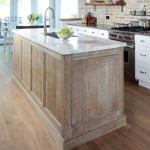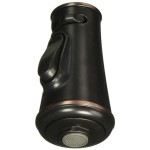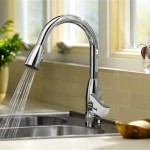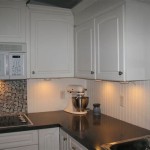Basin Rack for Kitchen Sink: A Comprehensive Guide
A basin rack, often referred to as a sink rack or dish drying rack, is an essential accessory for any kitchen. It provides a designated space for drying dishes, utensils, and cookware after washing. These racks not only promote hygiene by allowing items to air dry, thus reducing the risk of bacterial growth, but also contribute to kitchen organization and efficiency. The selection of a suitable basin rack involves considering various factors such as size, material, design, and functionality, each of which influences its suitability for different kitchen layouts and usage patterns.
The evolution of basin racks has mirrored advancements in kitchen design and manufacturing processes. Early versions were often simple metal frames, prone to rust and lacking in specialized features. Modern basin racks, however, incorporate diverse materials, finishes, and innovative designs aimed at enhancing durability, convenience, and aesthetics. Some racks are equipped with features like utensil holders, cutting board supports, and adjustable arms to accommodate sinks of varying sizes. The choice ultimately depends on individual needs and preferences concerning space constraints, drying requirements, and desired aesthetic appeal.
Understanding the Different Types of Basin Racks
Basin racks are available in a variety of configurations, each catering to different needs and kitchen layouts. These variations can be broadly categorized based on their placement relative to the sink and their overall design features. Understanding these distinctions is crucial for selecting a rack that optimally fits the available space and effectively meets drying requirements.
Over-the-Sink Racks: These racks are designed to extend horizontally across the width of the sink, utilizing the empty space above the basin for drying. They are particularly useful in kitchens with limited countertop space, as they keep water from dripping onto the counter. Over-the-sink racks often feature adjustable arms to ensure a secure fit on sinks of different sizes. They typically include compartments for utensils, plates, and bowls, maximizing the drying capacity within a compact footprint. Some models even offer dedicated holders for cutting boards or pot lids, further enhancing their functionality.
Countertop Racks: Countertop racks are the most common type of basin rack, designed to sit directly on the kitchen counter next to the sink. They are generally more versatile than over-the-sink racks, as they can be placed in various locations depending on the available space. Countertop racks come in a wide range of sizes and designs, from simple two-tier models to more elaborate racks with specialized features. The design often includes a drip tray beneath the rack to collect excess water and prevent it from damaging the countertop. The capacity of these racks can vary significantly, making them suitable for both small and large households.
Roll-Up Racks: Roll-up racks are a relatively recent innovation in basin rack design. They consist of a series of stainless steel or silicone-coated rods connected by flexible hinges. These racks can be rolled out across the sink to provide a temporary drying surface and then rolled up for compact storage when not in use. Roll-up racks are particularly useful for small kitchens with limited storage space. They can also be used as a trivet for hot pots and pans or as a colander for rinsing fruits and vegetables directly over the sink. Their versatility and space-saving design make them a popular choice for modern kitchens.
Key Considerations When Choosing a Basin Rack
Selecting the right basin rack requires careful consideration of several factors, including the available space, the materials used in its construction, the capacity needed, and the design features that best suit individual needs. Failure to adequately assess these factors can result in the purchase of a rack that is either too small, too large, or simply incompatible with the existing kitchen setup.
Size and Capacity: The size of the basin rack should be carefully matched to the available countertop space and the typical volume of dishes that need to be dried. A rack that is too large can clutter the countertop and impede workflow, while a rack that is too small may not be sufficient to accommodate all the dishes after a meal. Consider the dimensions of the sink and the surrounding area to ensure that the chosen rack fits comfortably without obstructing access to other kitchen appliances or work surfaces. For larger households or those who frequently entertain, a rack with a higher capacity, such as a two-tier model, may be necessary.
Material and Durability: The materials used in the construction of the basin rack significantly impact its durability, hygiene, and aesthetic appeal. Stainless steel is a popular choice due to its resistance to rust and corrosion, as well as its sleek, modern appearance. Plastic racks are generally more affordable but may be less durable and more prone to staining or discoloration over time. Some racks combine different materials, such as a stainless steel frame with plastic or silicone components. Consider the ease of cleaning and maintenance when choosing a material. Stainless steel and silicone are generally easier to wipe clean and less likely to harbor bacteria than porous materials like wood.
Design and Functionality: The design of the basin rack should not only be visually appealing but also functional and efficient. Look for features such as utensil holders, plate racks, and removable drip trays. Utensil holders provide a dedicated space for drying forks, spoons, and knives, preventing them from falling through the rack and ensuring they dry properly. Plate racks keep plates upright and separated, allowing for better air circulation and faster drying. Removable drip trays are essential for collecting excess water and preventing it from dripping onto the countertop. Some racks also feature adjustable components, such as movable arms or adjustable shelves, allowing for greater flexibility in accommodating different types of dishes and cookware.
Maintaining and Cleaning a Basin Rack
Proper maintenance and cleaning are crucial for extending the lifespan of a basin rack and preventing the buildup of bacteria and mold. Regular cleaning not only keeps the rack looking its best but also ensures that dishes are dried in a hygienic environment. The frequency and method of cleaning will depend on the materials used in the rack's construction and the level of use it experiences.
Regular Cleaning: A basin rack should be cleaned regularly, ideally at least once a week, to prevent the accumulation of food particles, soap scum, and mineral deposits. The cleaning process typically involves removing all items from the rack and washing it with warm, soapy water. A soft brush or sponge can be used to scrub away any stubborn stains or debris. Pay particular attention to areas where water tends to accumulate, such as the drip tray and the corners of the rack. Rinse the rack thoroughly with clean water and allow it to air dry completely before placing dishes back on it.
Deep Cleaning: In addition to regular cleaning, a deep cleaning should be performed periodically to remove any stubborn stains or mineral deposits. A solution of equal parts white vinegar and water can be used to soak the rack and loosen any buildup. For stainless steel racks, a stainless steel cleaner can be used to remove water spots and restore shine. For plastic racks, a mild bleach solution can be used to disinfect and remove any discoloration. Always rinse the rack thoroughly after using any cleaning agents and allow it to air dry completely.
Preventative Measures: Taking preventative measures can help to minimize the need for frequent cleaning and extend the lifespan of the basin rack. Always rinse dishes thoroughly before placing them on the rack to remove any excess food particles or soap residue. Avoid placing heavily soiled items on the rack, as this can lead to the buildup of bacteria and mold. Regularly empty and clean the drip tray to prevent the accumulation of stagnant water. Consider using a dish drying mat beneath the rack to absorb any excess water and protect the countertop from damage.
In conclusion, selecting and maintaining an appropriate basin rack for a kitchen sink involves careful evaluation of various types, key features, and cleaning methods. The goal is to find the right balance between functionality, durability, and ease of maintenance to ensure an efficient and hygienic dish-drying process that optimizes kitchen organization and workflow.

Kohler Riverby 14 13 In X 18 56 Stainless Steel Sink Basin Rack K 6237 St The Home

Kohler 6638 St Stainless Steel Sink Racks For 30 Whitehaven

Kohler Riverby 14 13 In X 18 56 Stainless Steel Sink Basin Rack K 6237 St The Home

5 Advantages Of Having A Sink Grid

Adjustable 2 Tier Extra Large Dish Drainer Rack Above Sink Storage Drying Solution Shop Now

Kohler K 6255 St Riverby Right Hand Sink Rack Stainless Steel

Vevor 36 In Farmhouse Kitchen Sink 304 Stainless Steel Drop Sinks Top Mount Single Bowl Basin

Expandable Dish Basin Drainer Basket Kitchen Sink Dishwasher Shelf

Bowl Cloth Drainer Kitchen Sink Organizer Clothes Drying Rack No Punching Dish Basin Shelf Household Sponge Racks

Double Slot Thickened Vegetable Washing Basin Countertop Temu
See Also








